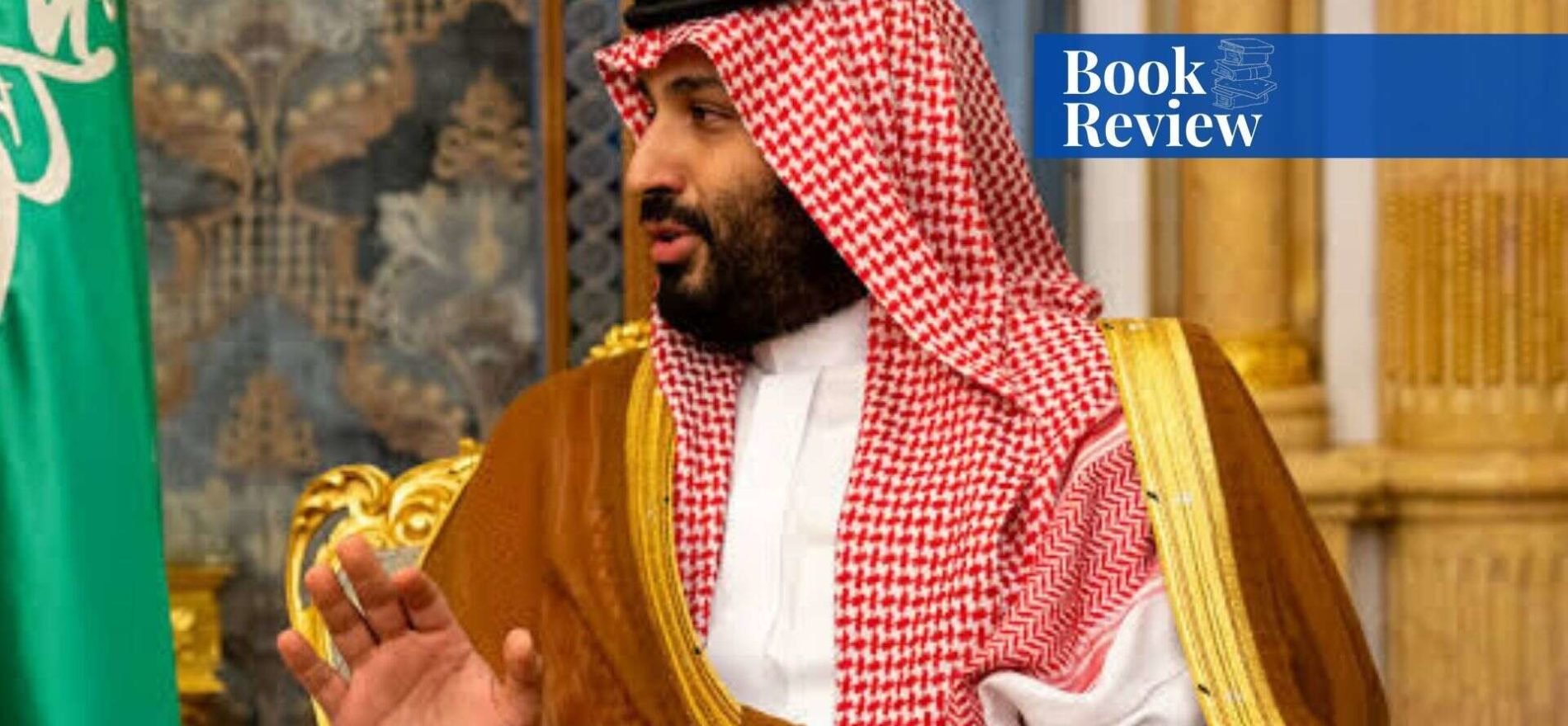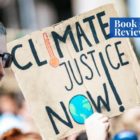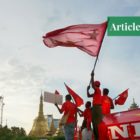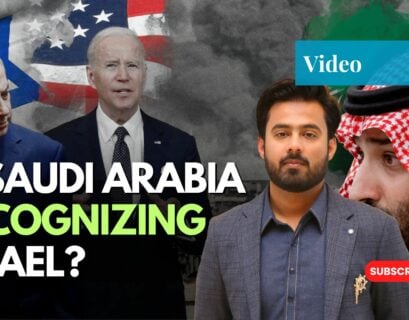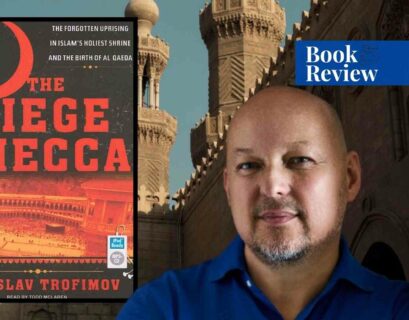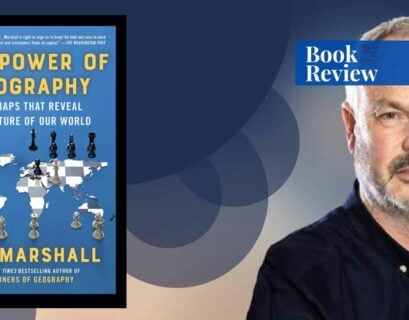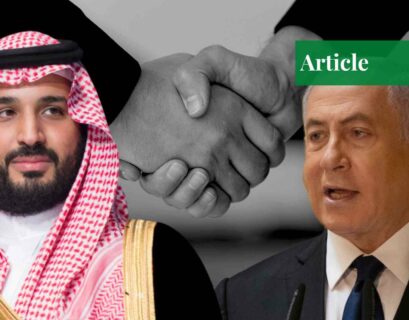Blood and Oil by Bradley Hope & Justin Scheck
The book, “Blood And Oil: Mohammed bin Salman’s Ruthless Quest for Global Power”, is written by Bradley Hope and Justin Scheck and published by John Murray Publishers in September 2020 in Great Britain. Bradley Hope, based in London, has been a Middle East correspondent for six years (until 2016) after which he worked as a journalist for the Wall Street Journal, covering misfeasance and finance.
Besides Blood and Oil, Bradley Hope has co-authored the New York Times bestseller, “Billion Dollar Whale”, and was listed in the finals for the Pulitzer Prize. Hope’s work has won Gerald Loeb Award as well. The co-author, Justin Scheck, who has been based in New York since 2007, works for the Wall Street Journal and covered white-collar crimes. Since 2016, he has also started writing about Saudi Arabia.
The content of the book, in the wider paradigm, revolves around one person: the existing crown prince and most probably the future king of Saudi Arabia, the center of the Muslim world and Middle Eastern politics, the embodiment of change and reform as well as passion and aggression, Mohammed bin Salman.
The book deals with an insider’s view of the crown prince’s rise to glory and from being just another son of the King Salman clan to being his closest and most trustworthy son. It provides a glimpse of his thought process, his vision for his country, his approach, people, allies, family, and state leaders. It explains what his policies have been, how they were formulated, and why they were the way they were. Blood And Oil: Mohammed bin Salman’s Ruthless Quest for Global Power is a gaping assessment of where Crown Prince Mohammed bin Salman stands in the world of oil and politics and where he and Saudi Arabia are headed.
Rise to Power
In the first half of Blood and Oil, Bradley Hope and Justin Scheck explain the rise of Mohammed bin Salman from being just another one of King Salman’s sons to one of the most influential and powerful Saudis, domestically and internationally. When his father took the throne in 2015, Mohammed bin Salman was appointed as the defense minister, and he immediately started ousting rival royals, including the then-crown prince, Mohammed bin Nayef.
Mohammed bin Salman, who is only 30 years old, has accumulated tremendous strength, effectively controlling security, the economy, and eventually leading Saudi Aramco—one of the world’s largest and most profitable oil companies. Unlike many of the other princes in his extended family who spent their youth vacationing or pursuing higher education in the US and Europe, the crown prince decided to stay by his father’s side in Saudi Arabia itself.
He used this time and opportunity to learn “about the frailties of his rivals within the royal family.” His character was shaped by an early fascination with Niccolò Machiavelli as well as Alexander the Great. He grew up talking about “Steve Jobs and Bill Gates”, men who built enduring legacies by focusing on results and being shrewder than their competition. The writers expertly use this knowledge to gain a better understanding of his mental processes.
In this book, Crown Prince Mohammed bin Salman comes across as someone who understands that arrogance will not get him what he needs. He wants Saudi Arabia’s economy to become more diverse and less reliant on oil. He needs to be thought of as a supporter of women’s rights. His power is based on finding the balance between securing his credibility among conservative clerics and members of his own clan while also positioning himself as a reformer in the West and among Saudi youth.
His father, King Salman, put aside the traditions in 2017 and completely overhauled the hierarchy by appointing Mohammed bin Salman, his favorite son, as the crown prince of the Kingdom of Saudi Arabia. The crown prince acknowledged that the insular kingdom needed urgent modernization as well as foreign investment. He hired high-priced Western consultants, McKinsey, and Boston, for a slew of charts, reports, and some good suggestions, including finally allowing women to drive.
According to the authors, the crown prince had realized that “things like bombing Yemen and promising economic renewal helped, but none was more important than proving he could be the man to revitalize the strained US-Saudi relationship.” As a result, he concentrated his efforts on gaining the confidence of Donald Trump’s son-in-law, Jared Kushner, courting Silicon Valley CEOs, and becoming the darling of American media.
Yet, underneath Mohammed bin Salman’s reformer pretense was an autocrat’s heart. He started rounding up hundreds of wealthy Saudis, including prominent businessmen, senior royals, and religious leaders, whom he said had amassed wealth illegally. Other unpredictable moves by the crown prince followed, including the abduction of now-former Lebanese Prime Minister Saad Hariri and the imposition of a blockade on the neighboring Gulf state of Qatar, all of which he viewed as being soft on Iran.
The crown prince and his close advisers started monitoring opponents or anybody who criticized him or the monarchy, threatening, imprisoning, or even killing them. The authors explicitly discussed this in the second half of Blood And Oil: Mohammed bin Salman’s Ruthless Quest for Global Power.
The second half of the book deals with the continuation of Crown Prince Mohammed bin Salman’s ambitious policies and decisions, a thirst to prove himself, and his urge to reinstate Saudi Arabia’s importance in regional and international politics. So, in a hurry of being first-in-line to the throne, he went on an expedition to eliminate every obstacle in his way, and removing Prince Mohammed bin Nayef (the previous crown prince) was the biggest task.
On 20th June 2017, Mohammed bin Salman, supported by the Trump administration, abducted Mohammed bin Nayef and forcefully asked him to resign. After a full night of threats, requests, and commands, Prince Nayef finally agreed and stepped down from the throne and Mohammed bin Salman took over.
The next-in-line of the new crown prince’s hitlist were the clerics and critics and in September 2017, his administration closed in on the Wahhabi clergymen, including Salman-al-Ouda, Essam-al-Zamil (an economist), Jamal Khashoggi (journalist and public intellectual), and poets, on the grounds of treason.
A Reformed Saudi Arabia
Though the Saudi crown prince indicated several times that he was reforming Saudi Arabia, the reforms were never meant to include freedom of speech and politics. In the midst of this crackdown, he conducted a lavish Future Investment Initiative with the intention of attracting investment for the new, powerful, and economically reformed Saudi Arabia.
The participators included Stephen Schwarzman (CEO of the Blackstone Group), Masayoshi Son (CEO of SoftBank), Travis Kalanick (former CEO of Uber), Ari Emanuel (a Hollywood agent), Steve Mnuchin (US Treasury secretary), Tom Barrack (tycoon and Trump ally), Larry Fink (CEO of BlackRock), Richard Branson (founder of the Virgin Group), reporters from Wall Street Journal, Financial Times, Bloomberg, and the New York Times. It was in the same event that Mohammed bin Salman revealed his visionary project of NEOM city and the opportunities it held for investment.
By the end of the event, however, Saudi Arabia ended up investing more abroad than the investment it pulled in. However, the event was still a success for sure; it resulted in a week full of headlines, front pages, and banners – a move that legitimated Mohammed bin Salman’s claim to the Saudi throne.
In the fall of 2017, Crown Prince Mohammed bin Salman commenced a full-fledged crackdown against 380 Saudis, including ministers, royals, businessmen, the Al-Saud family members who were corrupt, and more importantly, a danger to the crown prince and his road to the throne. The arrests were conducted under a decree which legitimizes the Supreme Anti-Corruption Committee’s right to investigate corruption and cheating, and make arrests.
The detainees were kept in the Ritz-Carlton Hotel, provided medical care, a barber, and the right to call home every few days. The only escape route was to return the corrupt assets and be free, which many practiced while others did not and were sent to prison. However, the most important detainee was Saad Hariri, the Lebanese prime minister.
He was detained on the grounds of corruption, through his company Saudi Oger, and his close ties with Hezbollah, which Mohammed bin Salman loathed. He was forcefully made to resign and was kept in detention until Emanuel Macron, the French president, orchestrated a public stunt and freed the Hariri family. Later on, Hariri took his resignation back, insulting the Saudi crown prince widely.
Despite this, Crown Prince Mohammed bin Salman continued to bring about social reforms throughout the 2017 fall and revived archaeological sites, starting with Al-Ula. He transformed Al-Ula, a city that was once the capital of the Dadan Kingdom (300 BCE), into a classic heritage site, incorporating a concert hall, clubs, and pop-up restaurants within the courtyard.
The Murder of Jamal Khashoggi
2018 proved to be a rollercoaster sort of year for the Saudi defense minister; he toured and visited Egypt, the United Kingdom, and the United States, and met billionaires, businessmen, and CEOs. Meanwhile, his other side escalated surveillance, arrests, kidnappings, and violence against perceived threats. Loujain-al-Hathlal, a women’s rights activist was abducted, tortured, given rape and murder threats for giving up her activism which backfired when the case went global and became a curse for the prince.
The biggest blow for his administration has, undoubtedly, been the murder of Jamal Khashoggi, Mohammed bin Salman’s biggest critic. Due to Khashoggi’s close alliances with Atkay (Erdogan’s ally), his bold questioning over the prince’s course of action, and his new DAWN (Democracy in Saudi Arabia Now) initiative, he was perceived as a grave security threat.
So, like other threats, he was removed from the way on 22nd October 2018, when a 15-men kill squad sedated, suffocated and sawed his body parts in the Saudi consulate in Turkey. Whether the crown prince had authorized the murder or not, is still unclear, but Turkey had enough proof to associate this incident with him and upon this reveal, the Saudi government and prince received global backlash.
Nonetheless being confident that he would walk out of this freely, Crown Prince Mohammed bin Salman kept on with his zealous reforms and policies. He conducted a Formula E Race in Riyadh in December 2018 and transfigured it into a global event by inviting dozens of celebrities from the entertainment and business industry, publicizing their presence to ward off the ill effects of the Khashoggi killing.
He even placed Saudi Aramco’s shares for initial public offering in the Saudi stock exchange in December 2019 and earned $25.6 billion. The Saudi prince also initiated a “Red Sea Week” in 2019, an invitation-based event designed to attract investment to build infrastructure in NEOM and to reflect upon the world that he can still draw in the world’s richest and most powerful people.
On the whole, 2019 had been a year of laying low and regrouping for Mohammed bin Salman and through 2020 he wanted to make a comeback by hosting a G-20 meeting, which he did, and by its virtue, he showed a new version of the Kingdom of Saudi Arabia to the world. He also asked his team to make plans to end the Qatar boycott and bring peace to Yemen.
Yet, for an overly ambitious man like Mohammed bin Salman, it was nearly impossible to keep up the “good boy” sort of personality for long. This is why in the start of 2020 when COVID-19 was on the rise and the oil crisis began and he could not achieve the desired results from the Russian deal of cutting down production, he started an oil war and flooded the markets with tons of excessive oil, resulting in the decades-low prices of oil.
All this, in an effort to put some companies under strain, to bring around Putin, and to reinstate to the world that Saudi Arabia was still in charge of the oil price settlement. A deal between Russia and Saudi Arabia was later brokered by Jared Kushner and the crisis came to a halt. With a further escalation in COVID-19 and everything going under lockdown, Mohammed bin Salman went to live in his NEOM palace where he held meetings discussing his future as a king, a future that can guarantee his legacy.
Analysis
From our analysis, the book is an outstanding piece of investigative journalism and provides the reader with an in-depth study of the Al-Saud family dynamics and the power politics of the Saudi Arabian kingdom. The book, Blood And Oil: Mohammed bin Salman’s Ruthless Quest for Global Power, keeps the reader intrigued and hooked till the end and conveys its message in simple, comprehensible, and unambiguous diction. The book provides you with enough evidence and information to assess and evaluate the overly ambitious and aggressive policies of Crown Prince Mohammed bin Salman.
Analysing this book, one understands the geopolitical, geostrategic and political significance of Saudi Arabia globally. With only 2/3rd of the population of California, Saudi Arabia lies at the centre of world politics and reflects how a single leader can put the entire state and global security at risk. Due to its petrodollar economy and billions of dollars of investment, Saudi Arabia is an epitome of a power struggle.
Since Mohammed bin Salman has been close to his father since childhood and as such, witnessed the over-lavish lifestyle of most of the royal family members and kept a close eye on the internal power dynamics, it caused him to have a bitter and harsh attitude towards them. It instigated in him an urge and desire to prove his and Saudi Arabia’s worth by showing something other than just oil, kingship, and conservatism. This longing made him step up the traditional power tactics, reassess his political game and impress upon the world what the Gulf state is capable of.
On this expedition, at times, he has crossed the red line and has become antagonistic while endangering his own people’s security. This is what makes him threatening and fearsome for Saudi Arabia, the Middle East, and the world. Jamal Khashoggi’s murder, the Ritz Carlton abductions, the forceful takeover of the throne, and the illegal elimination of every single critic are amongst the string of pearls to exemplify just how far he can go to satisfy his zeal.
If you want to submit your articles, research papers, and book reviews, please check the Submissions page.
The views and opinions expressed in this article/paper are the author’s own and do not necessarily reflect the editorial position of Paradigm Shift.
